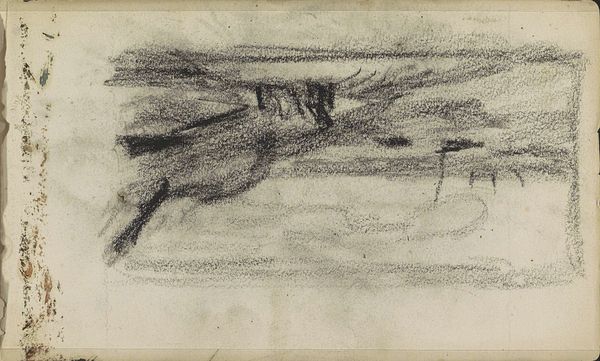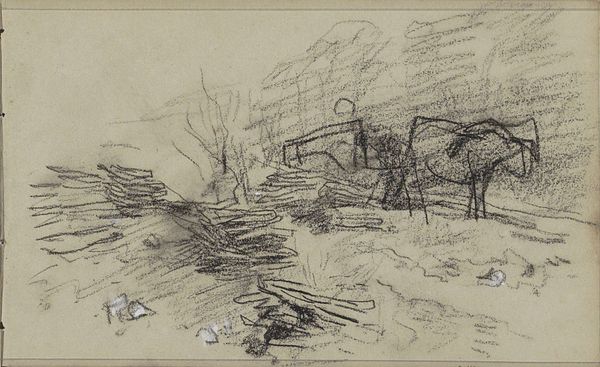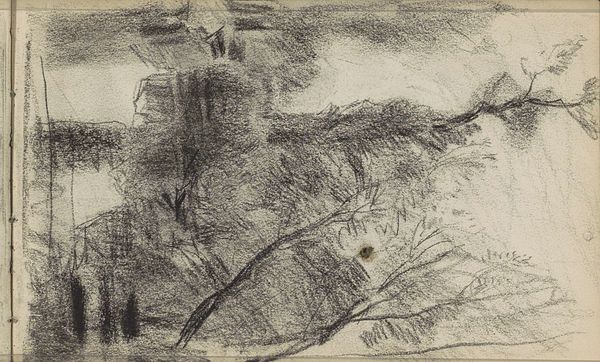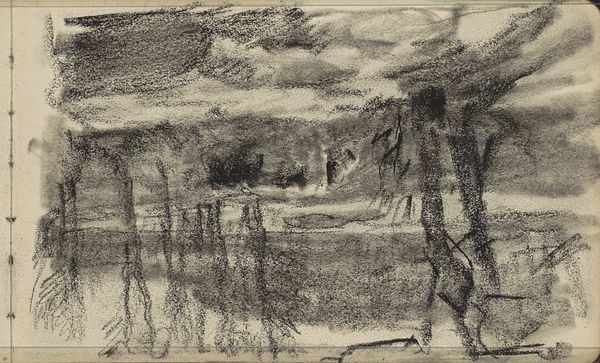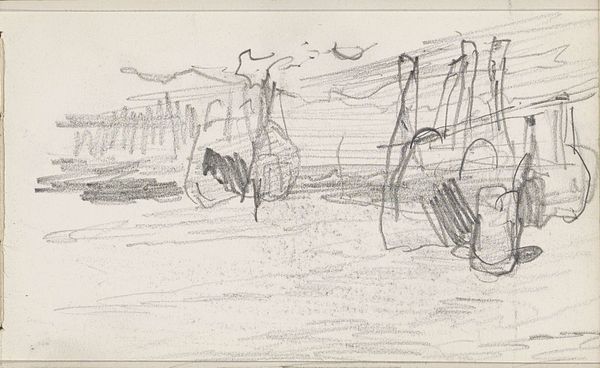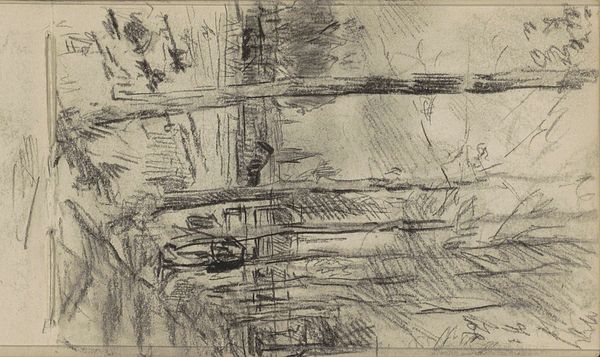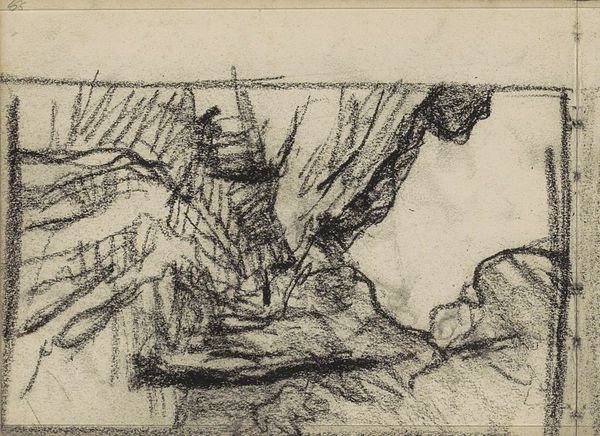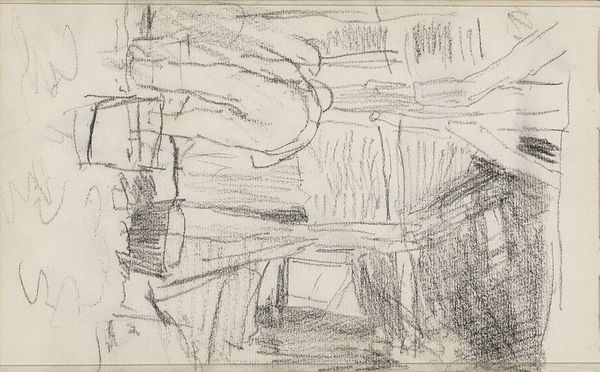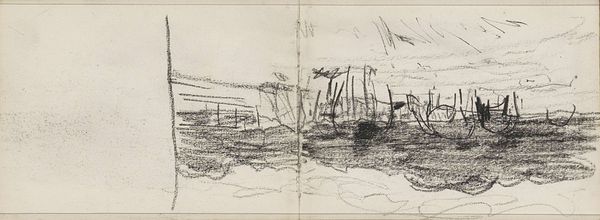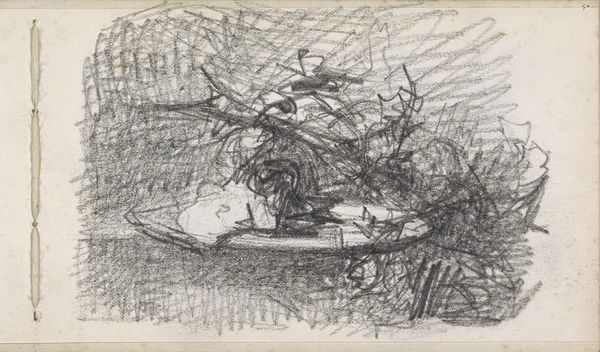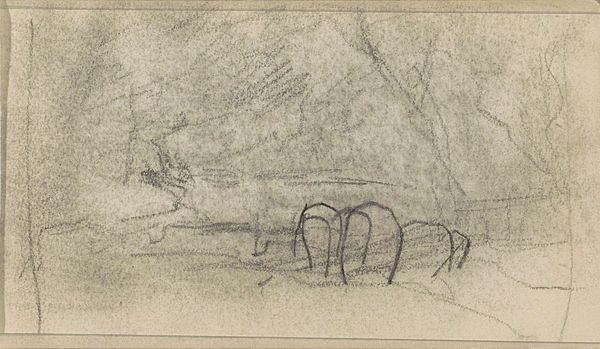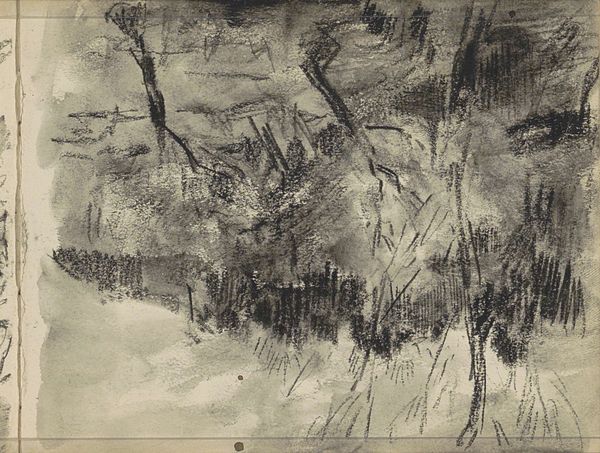
Copyright: Rijks Museum: Open Domain
Curator: Before us we have a graphite drawing by Anton Mauve, entitled "Landscape with a Figure near an Animal," created around 1876 to 1879. It's part of the Rijksmuseum collection. Editor: My first impression? It feels... heavy. Melancholy. Like looking at a fading memory. The soft gradations in graphite almost veil the subject, which takes on this eerie, haunting mood. Curator: Absolutely. The use of graphite allows Mauve to capture fleeting atmospheric effects and evoke a sense of transience. Given Mauve's involvement in the Hague School, how do you see this piece fitting within broader discussions about landscape art and national identity? Editor: For me, this has everything to do with being in-between two worlds. I see both a grounded, naturalistic approach typical of the Hague School but also... it seems Mauve doesn't want us to get comfortable. This liminal space of landscape art offers us some critical way of assessing how the construction of land use shapes identity, like the Romantics but even more gritty! I mean, it's practically crying out for a Joni Mitchell soundtrack! Curator: Yes, that sense of in-between is crucial. This work offers an interesting glimpse into rural life, one far removed from the polished idealizations often seen. And the ambiguous presence of the figure and the animal, are they coexisting, competing for resources, or simply sharing a space? This ambiguity encourages us to question the dynamics between humans and the natural world during industrialization. Editor: It also comes down to what gets lost when industrialization happens; what's the trauma imbedded? The heavy atmosphere in the graphite shows it all... it isn't necessarily pretty or nice but there are nuances in showing the change of a rural world that feel deeply empathetic, almost a lament. I keep looking, wanting the animal to speak! Curator: Ultimately, I appreciate how Mauve prompts us to think critically about how we engage with art that seems purely observational and benign. We can examine through realism, romanticism and those very subtle choices in composition or tone, the broader narratives shaping society. Editor: Exactly! And isn’t that why we’re all here, to let one drawing unravel a universe of feeling, insight, and maybe even a little bit of rebellious contemplation? This drawing is an invitation to explore the artist, to feel the shifting landscape, and even consider our very small but deeply vital place in it.
Comments
No comments
Be the first to comment and join the conversation on the ultimate creative platform.
